CONCEPT ENGINEER: Moncler’s REMO RUFFINI
|Joerg Koch
To celebrate 70 years of Moncler, 032c publishes an interview with CEO Remo Ruffini. Originally published in our Winter 2021 Issue, 032c speaks with the man responsible for the triumphent reinvention of the Moncler jacket.
Fashion brands used to make clothes. Now they make productions: they are streaming services, film studios, publishers, arenas, resorts – luxury entertainers working across analogue and digital media. As both a leader and a foreseer of the value of “world-building” in the 21st-century fashion industry, Remo Ruffini set an example by creating immersive content and out-of-the-box events that allowed people not just to wear Moncler, but experience it. Ruffini is an early adopter with an impeccable sense of timing, quick to embrace unconventional concepts that would later become industry standards. The “Genius” of the Moncler universe is the collaboration – a concept that Ruffini has expanded and redefined over the last 20 years.
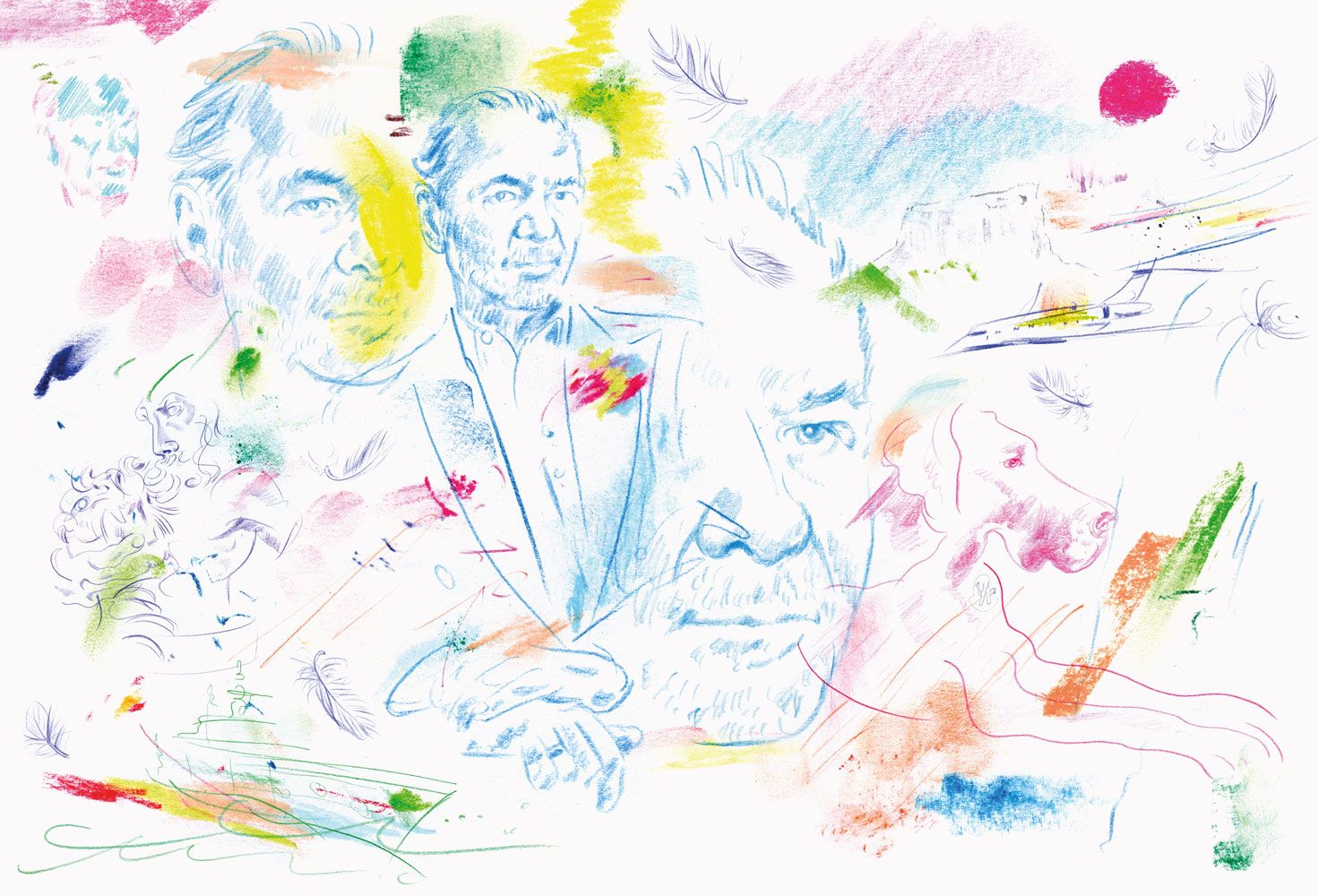
You first went to America in the mid-1980s. Italy was still dealing with the political turmoil of the Years of Lead, but the US was in the Reagan years – it was stock market madness, capitalism, and MTV. It must have been a big contrast for you, coming there as a young Italian.
REMO RUFFINI: I had just finished school, and I had already decided I didn’t want to go to university – I wanted to start working. My parents were both in fashion textiles, and my father had moved his business to New York in the 1960s. He pushed me to come out and give working there a try. So I went to America – where I quickly realized that I didn’t want to follow my parents. I wanted to make something on my own. But I stayed a few months there, exploring the surrounding area – which was totally unfamiliar to me – and traveling to upstate New York and Canada. What I experienced there was totally unexpected, spiritually. When Italian kids used to dream of America, it was all about Madonna and Coca-Cola – not Martha’s Vineyard and Nantucket Island. But I was charmed by the area, by all the rivers and lakes, and felt something very European there – with a totally different twist. This place called New England just fit my taste. So when I moved back to Italy to start my own brand, in 1984, I based it on this idea of New England elegance. Think outdoor sports meets the Kennedys in their heyday, Italian design meets Cape Cod sportswear: a European twist on luxury the American way.
Was it purely an entrepreneurial spirit that motivated you to start your first company, New England, or was it a creative impulse, an urge to concept-engineer this “Cape Como” mash-up?
I didn’t have a master plan when I decided to mix the two cultures – I just thought it was interesting. I wanted to do something with the Brooks Brothers button-down shirts that were so popular at the time, and I wanted to work with florals. But I was 23 years old when I founded New England, so everything was very much happening in the present tense, developed in the moment. The impulse was, “I have to do something with button-down shirts,” or, “I wonder who is working with flowers right now.” I did a first season of 20 shirts, and I built up to a full look collection from there.
There was already a lot going on in the 1980s in Italy. C.P. Company was growing, and its founder, Massimo Osti, had already launched Stone Island. Miuccia Prada had entered the family business, launching her first successful bag in 1985 and her first ready-to-wear collection in 1989. Which Italian designers were influential to you in the early days of New England?
There was a genius to that moment. Massimo especially was a point of reference for me. I learned a lot from what he did, starting from original military pieces and completely transforming them with his approach to garment dyes. He was also one of the first designers to work creatively with prints, which was still very rare in menswear when I was starting out. Most Italian brands were working with this very classic, English look. Aside from a Hawaiian shirt here and there, you just didn’t see prints.
I set out to make something that was sportswear, that worked with this popular Brooks Brothers look but was also very free. So I did a Liberty floral print on a men’s Oxford button-down. I was playing with motifs more common in womenswear, trying to twist them into men’s collections alongside, say, chinos – it was all very eclectic. And it was tough at the beginning, honestly. At first, people thought it was “quite strange” or “too feminine.” But the New England brand grew, and it was an amazing journey. I was totally immersed and involved in everything – from the production stage to the booth at Pitti Uomo. I still remember the day I bought our first computer, an IBM 400.
When you started working with Moncler – as a creative consultant, I believe – you had recently sold New England. Can you tell me about that transition?
When the Stefanel Group bought New England in 2000, I thought I was going to have to start all over again and build something totally new, from scratch. But I had already dreamed up my own story, and I didn’t want to do that again. I wanted something more consistent – something with strong roots, a strong system of ideas. Ideally, I thought, I wanted to work with a very, very small brand.
I began my business relationship with Moncler at a time when the company was not in a good state. I was brought in first to get to understand the brand, to motivate the leadership and the company. But there were too many financial problems, and a few months after I started working with them, Moncler was on the market. They had been going back and forth – “We will sell, we won’t sell, we can’t say if we will sell,” and eventually they turned to me: “Why don’t you help us and buy the company?” After nearly a year of discussion, I bought Moncler in 2003. It was a complicated decision for me, because of the business’ size. Its revenue was between 35 [million and] 40 million [euros], and I wanted something much smaller.
What did you see in the company that others didn’t?
I didn’t necessarily see something totally new or remote from my experience in Moncler. The brand had been very important for me since my childhood. When I got my first motorcycle, in the mid-1970s, my mom took me to this really nice sporting goods store and bought me my first Moncler jacket. She said, “We have to buy this new jacket. You need the right apparel if you’re going to try to drive a motorcycle to school in the morning.” My school was nine kilometers from my house, and we lived outside of Como – it was super cold, much colder than the weather is today. The jacket was light blue, super shiny, super bright. I would do everything in it – ride my motorcycle, go skiing – and it protected me for five years. So I always felt that Moncler was an amazing brand. But what made the biggest difference for me, when I decided to buy it, was how the brand was perceived: Moncler had a huge credibility in terms of roots and DNA, on top of everything that they had done in the previous 40 or 50 years.
A few years before your purchase, something happened – say, in the late 1990s – [when] suddenly a person like me, who was into culture but not interested in fashion, got into Helmut Lang and Raf Simons. A new luxury fashion industry was emerging. How would you describe the fashion system back then?
I think what happened back then was a junior version [of] what we have seen today in the luxury world, since about 2015, when we started Genius. We went to New York in the late 1990s to study this initial turning point. We looked at retail for brands like Helmut Lang – [instances] where you knew the name, but you weren’t familiar with the work – and in the store window you wouldn’t see any products, only the white box, the brand ego. So after I bought the company, I started thinking about how I could climb into the luxury world as someone with a brand that everybody associated with sports. Moncler was huge in that world; we sold in very good stores, but we didn’t have our own presence on major luxury streets. I didn’t have the money to open a new store at the beginning, so I concentrated on the industrial part and then on distribution – which was key to the image. Premium store buyers would ask me why I wanted to sell to them. They would say, “If you handle this kind of brand, you’re a sports store.”
After a few years, I realized I needed a designer. Not to design the collection – I still really wanted to focus on the basics, on the original pieces – but to have a name to go into these stores with. So, in 2006, I reached out to Adrian Joffe and Rei Kawakubo – it was a no-brainer. This was 15 years ago, and Junya Watanabe was a young kid – with his own line under Comme des Garçons. Our first collection together came out in 2007, just three or four pieces that Junya modified with some fabric changes on the down jacket, using English traditional fabrics for the outside and very colorful ones inside. I took this small collection to all the wholesalers – the industry was booming – and everyone bought it immediately. That was the turning point; that’s how we made it into the minds of the premium stores.

You took a nonfashion product – the Moncler jacket – and brought a fashion sensibility to it by working with fashion people like Junya. One of the first campaigns was shot by Bruce Weber, right?
That started a little bit later. I was working on production, organization, distribution, but I knew I had to communicate the brand. I didn’t have the money for playing with celebrities and models, so I had to think out of the box. I called Bruce a few years after the first collaboration with Junya. I had loved Bruce’s work since I was 18 and we started receiving interesting magazines in Italy. He was shooting for Vogue Italia, and he did a takeover of an entire issue of the men’s version, Per Lui, in the mid-1980s. Bruce is not an easy person, but he and I have a good relationship. I would call him and say, “I don’t want any models,” or “I want a dog,” or “Let’s just shoot kids in the mountains,” and we ended up doing five or six campaigns together. Every time, we’d build them based on these dreams. The brand totally changed in those few years. In the meantime, I worked with Junya, Sacai, and Balenciaga – one designer for every season.
In a way, it was the actual product that forced you to think outside of the box in the luxury arena: the blue or black down jacket bought by the typical Moncler client is a very specific item in terms of its use value. It’s not as flexible as the brand image.
The problem was [that] the collection had two parts: the “iconic” part, which was more creative but not commercially successful; and the classic nylon, which was easy to sell but wasn’t visually interesting.
The iconic part is now super successful again, but for 20 years there was no market for it. People, especially men, didn’t want shiny or colorful jackets. I took about ten pieces I loved from the archive and started rebuilding the iconic division from scratch.
In 2013, Moncler’s IPO became the most successful stock market debut of the year, and one of Italy’s most successful ever.
We had actually tried to go public in 2011 – right after the Greek bailout. Banks said the market was dead, that it was very difficult. In addition, the Moncler development phase towards DTC [direct-to-consumer commerce] was still too “young” to attract the right investors. In fact, at that time we had just started opening DOS [directly operated stores] worldwide – in 2010 Moncler had only 39 stores, largely in EMEA [Europe, the Middle East, and Africa]. Investors wanted to invest in companies that had a large exposure to DTC and, in the meantime, I wanted to talk directly to the consumer. At that time, I thought this could happen by developing a network of DOS. I waited until the market recovered, and went public in December 2013. It was quite a good day – the shares grew like 40% in the first ten minutes. The success of the 2013 IPO is what eventually allowed us to open more stores, and we opened them very quickly. I wanted a more spiritual connection with my customer on the street.
You became the first Italian fashion billionaire with an essentially non-Italian product.
The Moncler logo still has a French flag. I deeply respect the DNA of the brand, even if today the company is based on a clearly different creativity. For example, at the beginning of our journey, I didn’t want to push summer collections, because summer was not in the DNA of the company. Once we were on the public market, we had critics saying, “Why can’t you do the same revenues in summer?”
The Thom Browne collaboration was performative, multi-platform, and it kind of anticipated how events and staging would become part of the cultural narrative of a brand. But at some point, you decided to stop the collaborations in 2017. Why, and why then?
After maybe ten years of collaborations, I wanted to make the next step. I wanted something more established. I started talking with womenswear designers, for example Alessandra Facchinetti, who had just left Gucci. I told her I wanted to build up a new strategy, to fund designers for full collections, and to do one for women. We did one season before I realized I still wanted to push menswear forward – that’s just my DNA. I started talking with Giambattista Valli, and later with Thom Browne. Thom and I had worked together on Moncler before, but he had since started his own company, and I knew he was specializing in suits. So I said, “Let’s make a fantastic cashmere suit jacket – with down feathers inside.” I also wanted to move away from traditional fashion shows – and Thom is not a traditional spirit. But later on I understood that people stopped wanting the same formulas; even seasonal collaborations didn’t interest them. And luxury fashion simply had to change, because the customer had changed. We couldn’t keep telling the same collaboration story.
And in 2018, you created Moncler Genius to change the narrative. This new model invited well-known designers to create distinct collections interpreting Moncler’s identity, but it was released on a monthly basis, not according to a seasonal calendar. For me, that was the point zero of this merging of fashion, entertainment, and commerce. What led you to that concept?
I knew we needed more content in order to talk with the customer, every day. And I needed to have a house that was building something with designers. I wanted to have one delivery every month or month and a half, to energize both conversations – with the consumer and with the designer – consistently, through products and through media. It was also about attracting new dynamics, new people, new generations. We worked with more “commercial” designers, as well as with experimental ones such as Craig Green, whose project, we realized, was not “commercially easy.” But it was iconic. More than anything, it allowed for us to communicate to people what we had in mind for expanding on what the down jacket could be. It was a huge, complex project – we made, like, 120 pieces all together – and it created another major turning point for the fashion industry. We did a few ambitious projects like this, in which our own expectations evolved regarding what we were capable of in terms of engagement. Then, suddenly, we were in the middle of Covid-19.
For a lot of us, the pandemic accelerated some industry changes that we already saw coming, or [it] generally shed light on what systems were or were not working. Did Covid-19 shake up your strategy, or show you Moncler’s weaknesses or places you’d been “right”?
Covid ended up providing an interesting framework for developing and trying out future strategies when it forced us online. The change we had to make this time was that we had to involve more people around the world [to be able] to stay in touch with the customer.
If you are successful today, and if you want to remain successful tomorrow, you will have totally changed your strategy in the last five years. Otherwise, the customer would have stopped listening to you. Constantly being open to changing the structure of the company – which is not an easy job, even if you are small relative to the huge conglomerates – is the only way to have a voice for tomorrow. And this is only the beginning. In the next three, four years, if you’re not staying on top of what we call “omnichannel,” meaning really being able to play with all different channels of communication, you will be out of the market. There are no other options.
How did all the communication shifts impact how you saw Genius specifically? I imagine Genius is your most “omnichannel” platform, or the most adaptable to it?
I was thinking a lot about Genius in this context – about how to connect globally with customers without staging the large-scale events, for example. One thing we did was we created a larger contamination with talent from other industries. We involved visual artists with the designer to develop a concept; we involved creatives from the film industry and industrial and product designers. Combining things creates a different culture and builds communities, even when your channels of interaction are limited – because it’s still about multiplying and connecting visions. That idea of expanding connectivity has been the guiding principle for Moncler Genius in 2021. But come to think of it, it’s not unlike what I did with New England back in 1982, [when] I processed East Coast aesthetics through an Italian creative lens. The crossovers are just happening on a much bigger scale now, with a lot more voices and on a lot more platforms, because that’s what the consumer is demanding.
Looking back, it seems like you’ve always been bored by the traditional fashion system. Time and time again, you’ve sought to remix and poke holes in it.
I change a lot – and the industry does, too. In the last five to seven years – since Gucci made its turnaround with the name and the design, and Balenciaga went from Nicolas to Demna – influential companies changed their approach, and in doing so they changed the luxury order. It really only took three or four brands to create the “new luxury.” This shift gave us an opportunity to take on a new identity ourselves, positioning Moncler within this new luxury world.
What is the Remo Ruffini definition of the “new luxury”?
New luxury means passing from the concept of consumer to the concept of community, from product to culture and experience, from transaction to relationship. One pillar of the “new luxury” is digital. Adapting constantly to technology and shifting norms is kind of like always being a startup. I didn’t think about it like this when we started Genius – the fashion world was still based on winter and summer collections, with one collection campaign, et cetera. Traditional media are not as successful as they were 20 years ago, when it was very easy to buy pages for your campaign in a quarterly magazine or speak to your customers through The New York Times.
So Moncler has to become a media company. As you create new values and new meanings, through collaborations and so on, you also have to find ways to communicate that – within quite a flexible structure. How do you keep the brand narrative under control?
You have to create a place of your own to have that direct conversation. This entails having your own digital platforms in addition to your own physical stores – and these experiences need to work together ... for them both to be interesting. It becomes more complicated with so-called “e-tailers.” When you work with them, you give other platforms the freedom to communicate your DNA on their website – and sometimes it’s a good interpretation of your own language but other times it’s not in our own language and needs to be finetuned. I don’t want to sell just to sell – respecting the brand ethos is crucial.
You mentioned that being smaller than the conglomerates gives you an advantage when you are evolving as a company. But you also recently invested in Stone Island. Is the end game to create a Moncler group?
We bought Stone Island just six or so months ago – and by doing so, I built up another dream. I was never looking for another company to buy, but this is a company I respect a lot. I want to help Stone Island turn into a more DTC brand – to bring it back to that direct interaction with the customer again. Stone Island is very small, and it’s very strong in terms of community – it always has been. Since its beginning it attracted a really interesting community, and as I understood it there has always been a comprehensive energy at the company – and a lot of the same people have been there since the beginning.
It’s interesting – you seem to have a pattern of starting something new every 20 years.
What I have in mind for the future – honestly there are many things in the basket, but at the end of the day, I want to able to keep having a direct relationship with my people, my community, easily and every day. This is the real dream.
Credits
- Text: Joerg Koch
- Illustration: Jan Robert Duennweller
Related Content
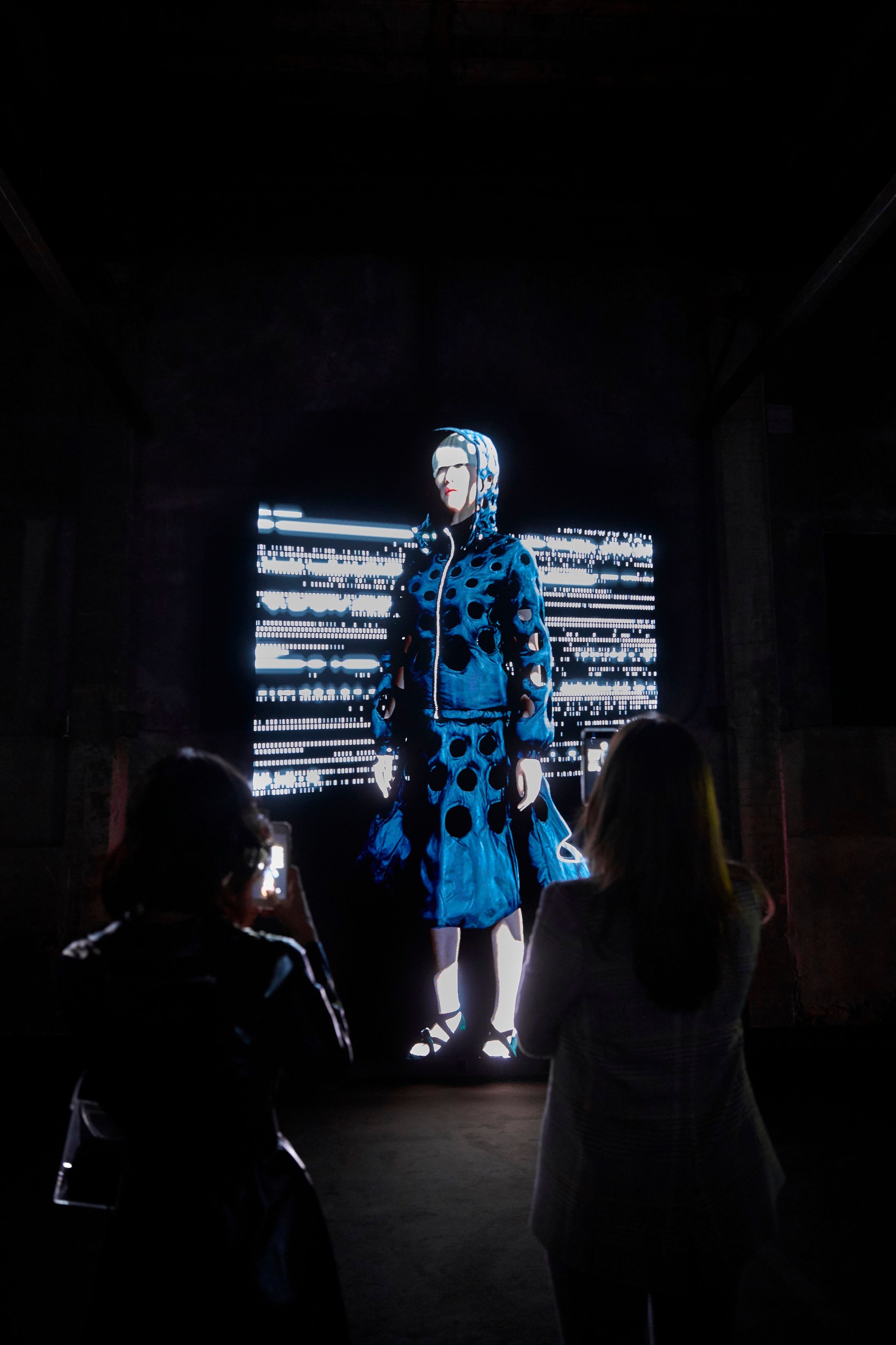
Moncler Genius’ Next Chapter: NOIR KEI NINOMIYA
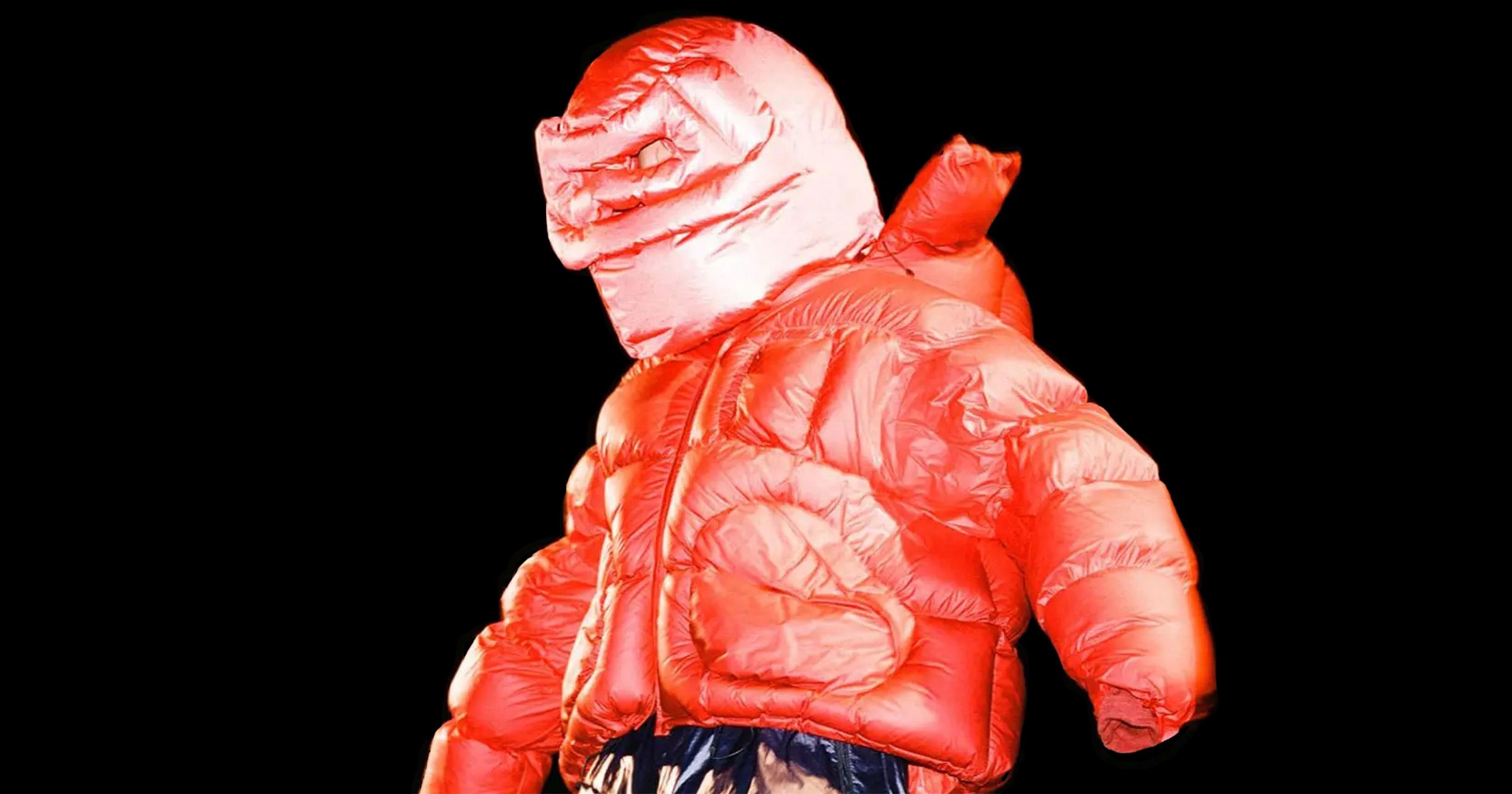
The Mutant Fantasy of DINGYUN ZHANG
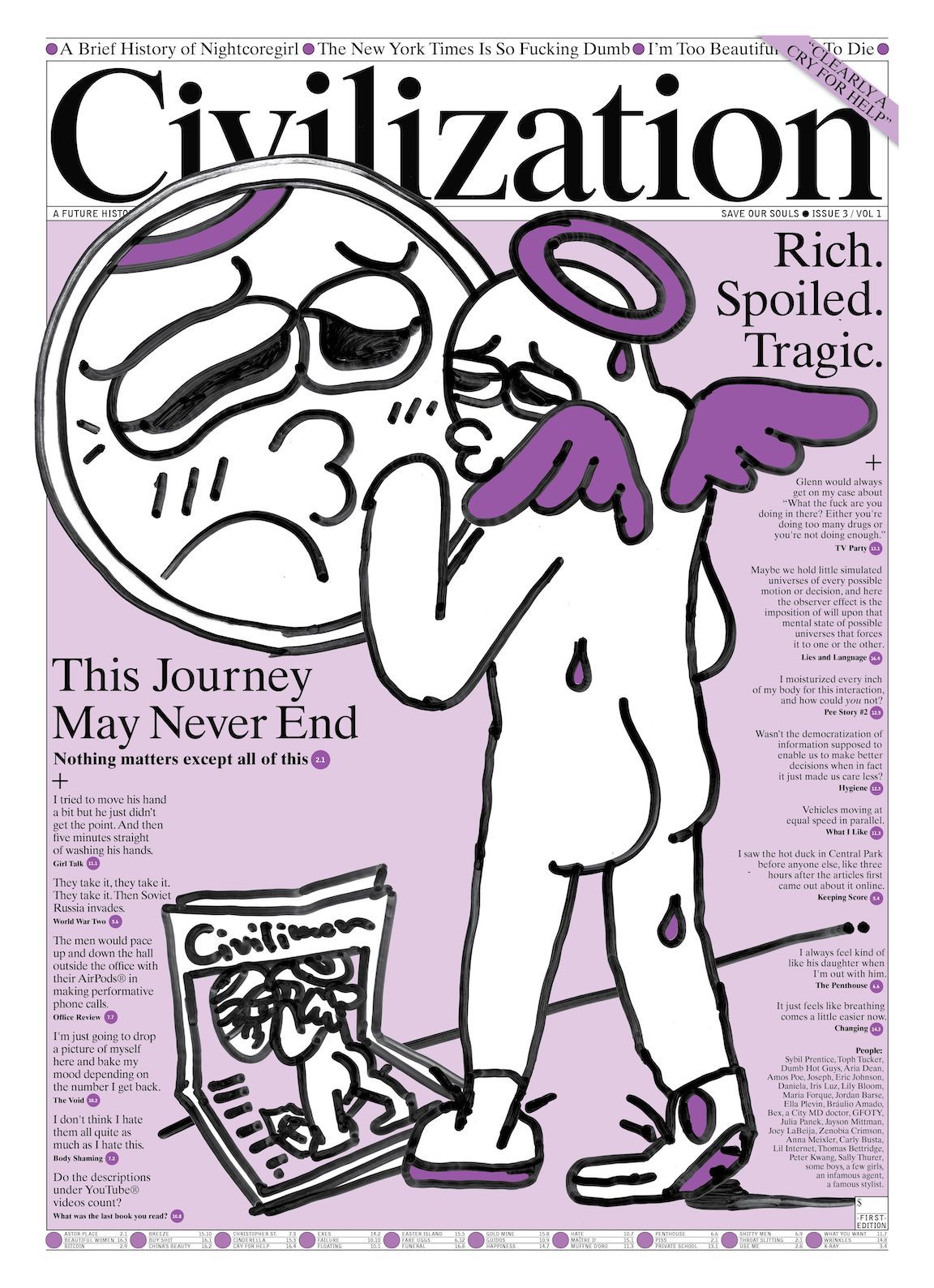
UNPROFESSIONAL. INTIMATE. A LITTLE BIT LIKE A READYMADE.
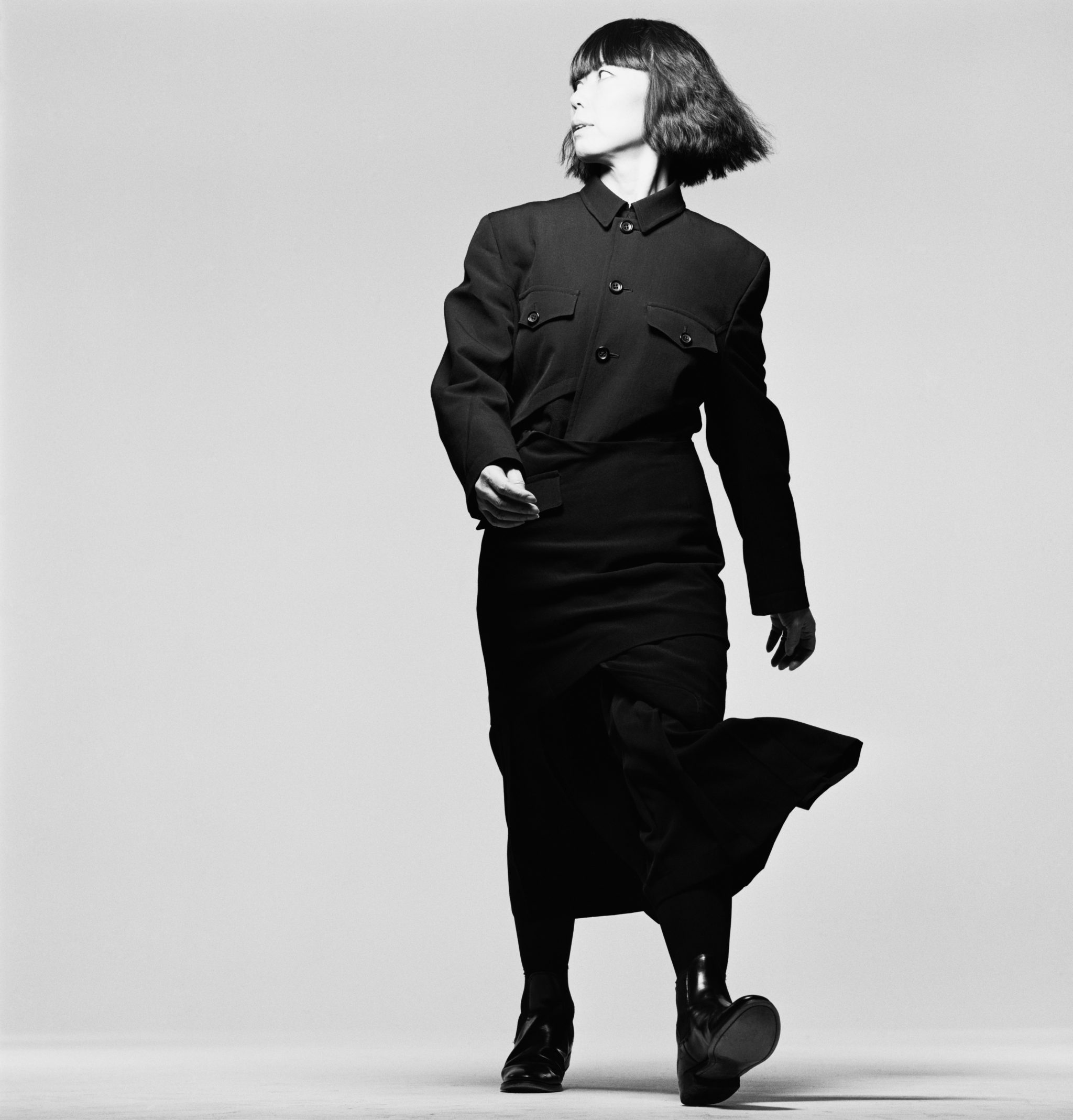
ROLE MODEL: JOHN WATERS on REI KAWAKUBO

TO LOVE ALONE
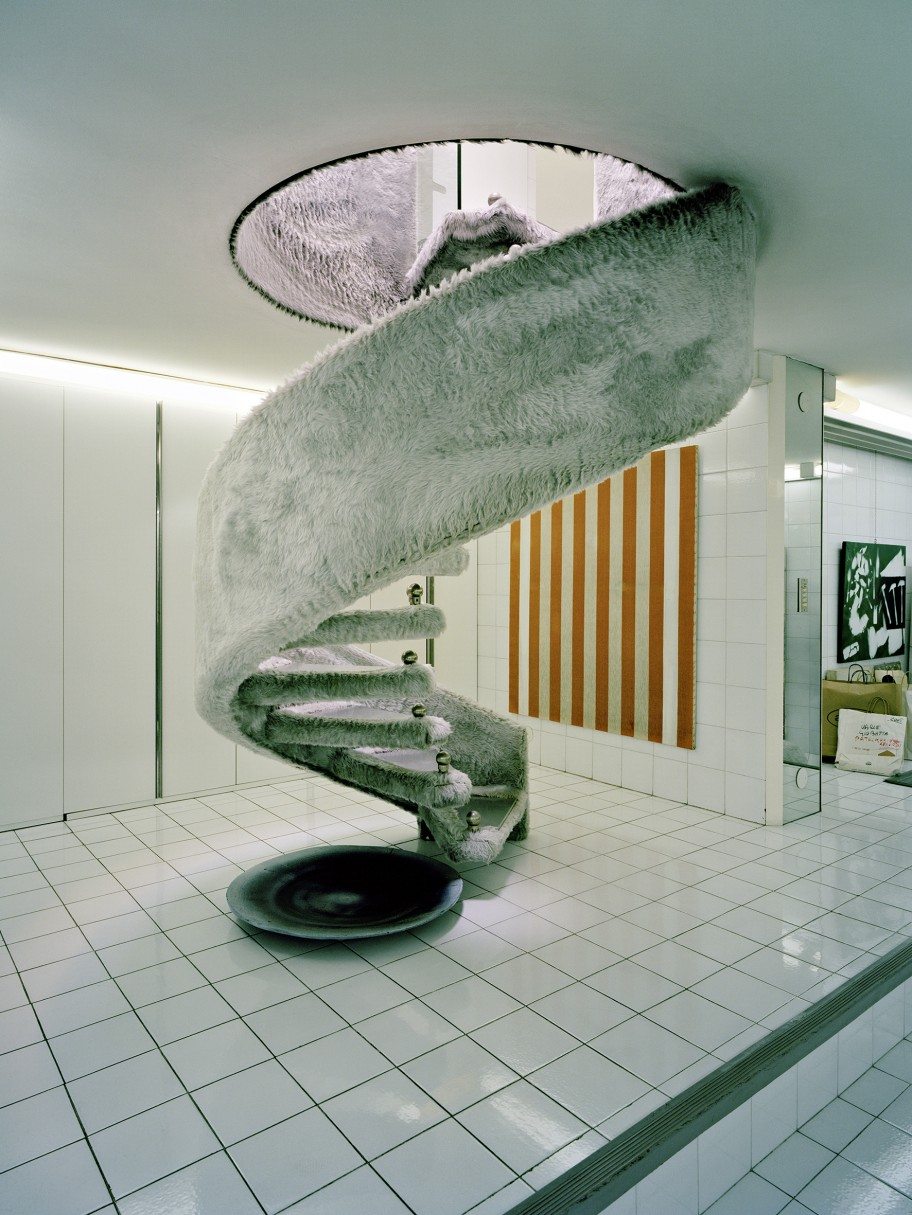
Modernism is Still Here (it’s Just Vacationing in the Italian Alps)
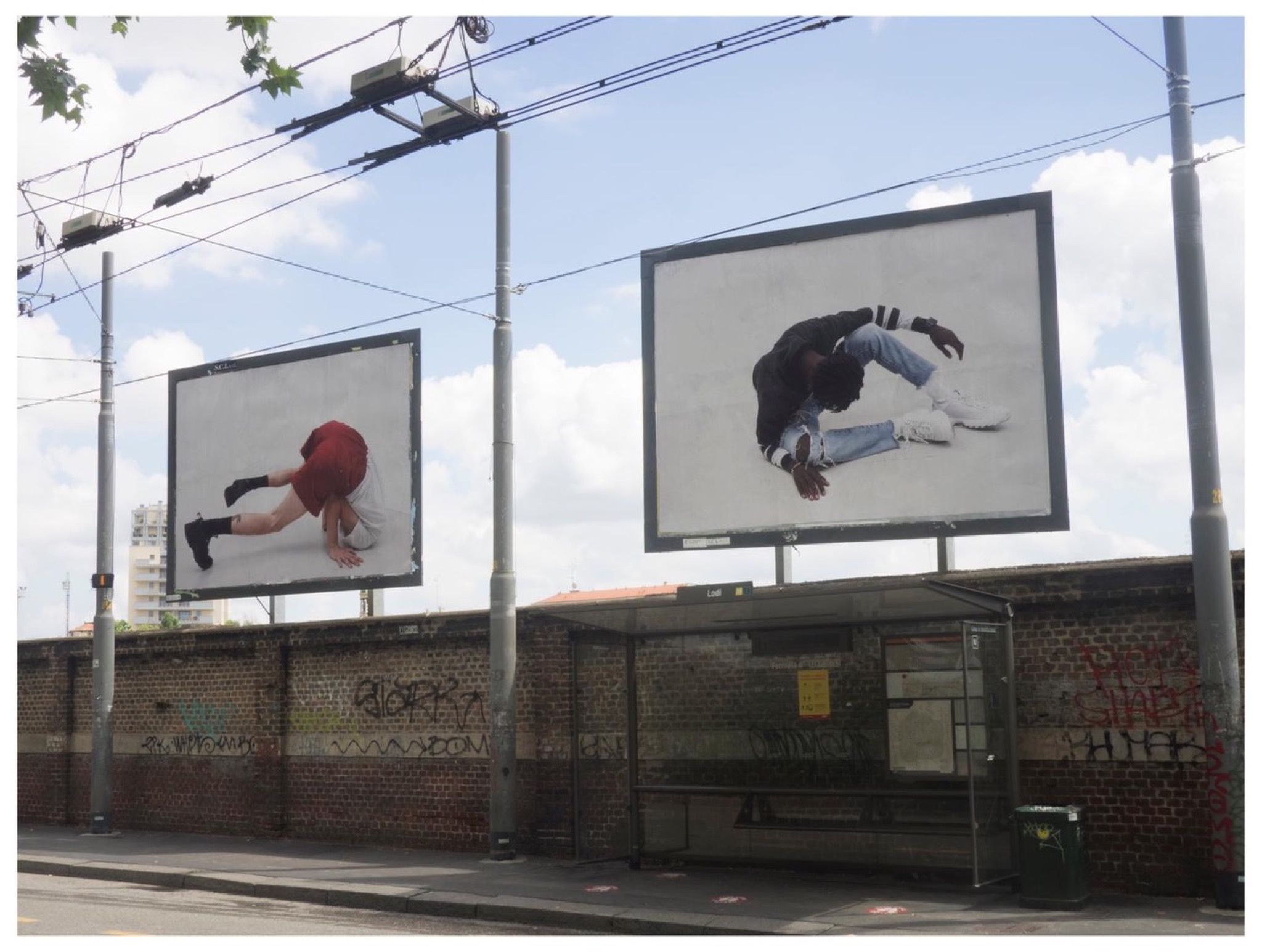
Ciao, Milano: Billboard Takeover Rebrands the Post-COVID City

“Never Gonna Give You Up” by Alasdair McLellan